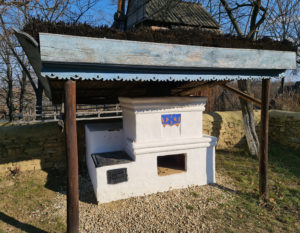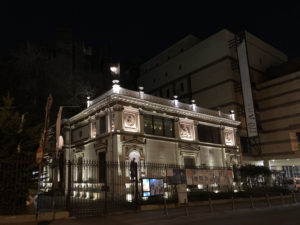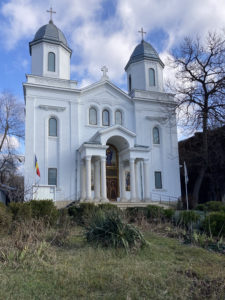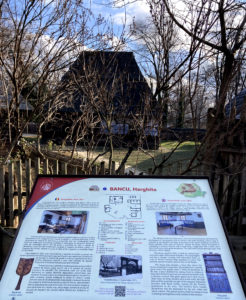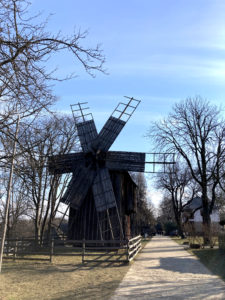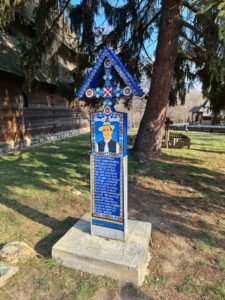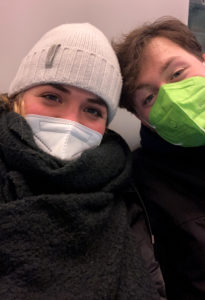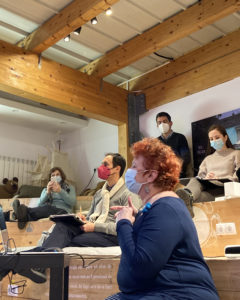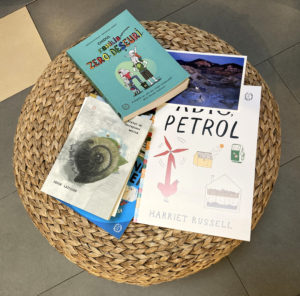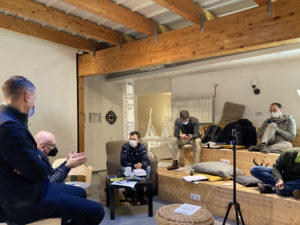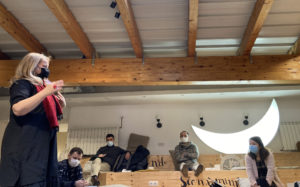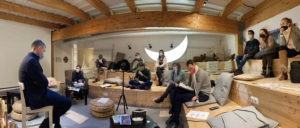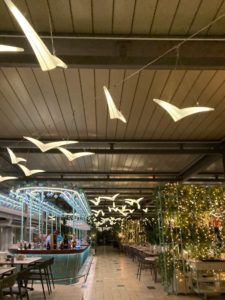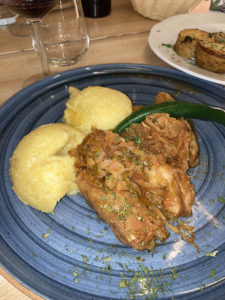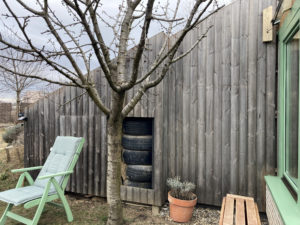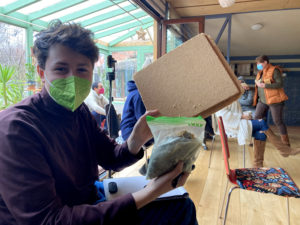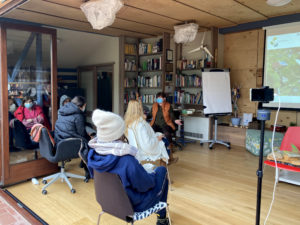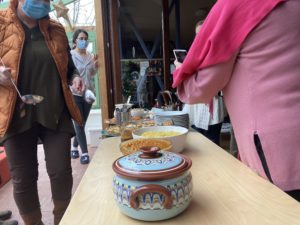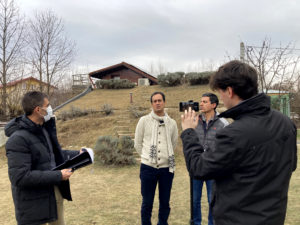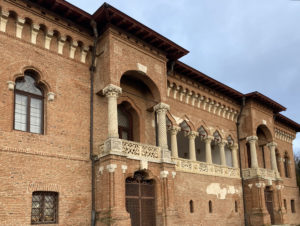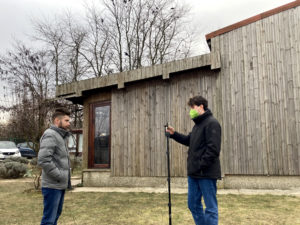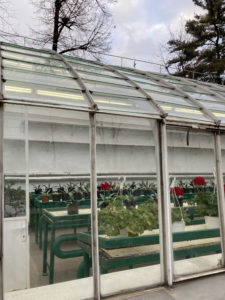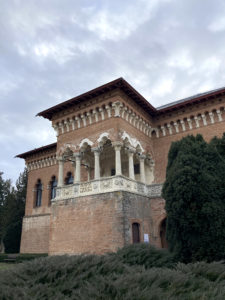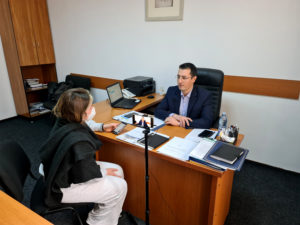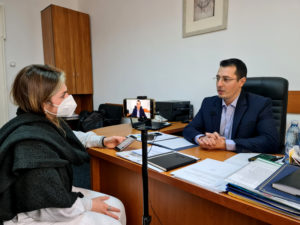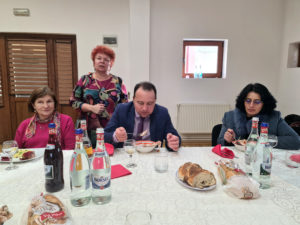
The departure date of the Erasmus mobility scheduled for ClickOnT was preceded by months of intense work between the members of the Fondazione Toscana Sostenibile Onlus -FTS-, project leader, and the Asociația Pro Expert Romanian partner responsible for the event.
In a historical moment like today’s, planning mobility is not easy: the purpose of an Erasmus project, in addition to the educational and informative one, mainly consists in weaving bonds, creating moments of confrontation and conviviality among the participants. The pandemic situation has strongly affected the modalities of mobility: many members initially involved in the project had to follow the workshops and activities planned remotely, those who took part in the stay in Romania had to submit to strict rules to combat the spread of infection.
Among the members who unfortunately had to abstain from physical participation in Romania also Carla Sabatini and Simone Pagni, referents of the coordination group. Their role, for the occasion, was delegated to two young FTS members who, in addition to taking an active part in the training, provided and efficiently maintained the audio/video connection for all the other remote participants including 3 Italians, 1 Spanish (Efagalicia) and 3 Poles (Cebs) and also taking care of the reportage aspect, sharing the topics and experiences of the speakers during the meetings and the collection of photographic materials, Giovanni Golfarini and Benedetta Lo Verso. The first is a university student of the University of Florence who has been collaborating with the Foundation for some time in the training of volunteers and contributes with his know-how to the implementation of educational and awareness-raising activities within the institution, Benedetta instead studied at the University of Florence and during its stay in Tuscany, came into contact with the Foundation with which it began to collaborate for the creation of environmental projects aimed at young people and adults such as the one conceived in Sicily, its region of origin.
The team, led by Carla, therefore worked on carrying out interviews with all the members of the partner institutions and documenting the appointments set and organized by Silvia Petre, President of the NGO “Asociația Pro Expert” based in Râmnicu Vâlcea.
The days spent in Romania were based on an agenda full of appointments and meetings related to the theme of climate change, in which members from partner countries, Poland, Romania, Lithuania, Spain and Italy were able to discuss the best practices applied in their localities and those known during the conferences in Romania.
The appointments started on 24/01 at Seneca Anticafé, a multifaceted reality in the beating heart of the city of Bucharest. Anastasia Staicu and Alexandra Teleucā, the founders, introduce us to their space that will host us for two days of debates and workshops. Seneca anticafé is a coworking space, a place for planning, for sharing ideas and thoughts as well as the headquarters of the “Seneca” publishing house. The latter was nominated as the first ecological publishing house in Romania thanks to the responsibility adopted in the creation of each book: only recycled paper and water-based ink with zero impact are used.
To get to know each other and start a journey altogether, Alexandra proposes exercises to create affinity and dynamism in a workgroup like ours, heterogeneous in terms of cultures, contexts, traditions and languages. Subsequently, Silvia Petre proposes a reflection on what is considered the most powerful machine in the world that allows us to choose responsibly every day: our brain.
The appointment on day 24 ends with a group dinner in the centre of Bucharest.
The following day, 25/01, the meeting place is always the Seneca Anticafe, which this time sees guests from the Romanian political and institutional scenes such as Raul Pop, an expert in the environmental sector and former secretary of the previous minister for the environment of the Romanian government. He offered us a reflection on the concept of responsibility underlying any proposal to the community to become more ecological and respectful of the environment. The second part of the time he dedicated to us, on the other hand, focused on the concept of circular economy, the principle according to which an object, even at the end of its life, becomes reused material for the creation of other objects. Therefore, a step that unites two practices typical of the type of economy is fundamental: reuse and recycling: both are determined by the fact that the object becomes waste but in the first case, it can be reused without altering its physicochemical characteristics such as a glass bottle, in the second case, on the other hand, the material undergoes a transformation to take on different shapes and functions. Finally, the NGO for which he himself works is presented: Ecoteca. It is a container of ecological ideas at the service of citizens and private companies. Raul Pop’s speech ends with a moment of shared reflection reserved for questions from the participants.
After a pause of a few minutes, Anastasia explains to the participants the meaning of the half-moon that illuminates the wooden amphitheatre on which we are seated. It is a symbolic and representative object of the artistic project “JOURNEY OF THE PRIVATE MOON” by Seneca Anticafe in collaboration with the photographer Leonid Tishkov made during the summer of 2015. This moon travelled for 200 km passing through the southern Carpathians, Wallachia and Transylvania bringing to light all those places destroyed by deforestation and industrial activities.
The second day of meetings and conferences ends with a moment of conviviality at a traditional restaurant where we could enjoy meat and cabbage rolls accompanied by the red wine “Negru de Drăgășani”, both typical of the Balkan area.
Day 26/01 our meeting takes place in Mogosoaia, a town on the outskirts of Bucharest. We are hosted by Felicia and Marius Ienculescu Popovici owners and creators of Green Mogo and founders of the Greeninitiave association.
As the name indicates, it is a greener way of creating training and spreading new models of life in the small town of about 5,300 souls. The projects they propose concern the environment but living in a social and community key as they have a dual purpose: to teach respect for the environment through workshops that involve children and adults in situations of social and economic difficulty, students and teachers. One of the most recent projects conceived by Felicia is “Scoliverzi” the one concerning the introduction of an hour of eco-sustainability and respect for the environment in primary schools, training the teaching staff to introduce virtuous examples among the youngest. The thing that struck us most was in fact how through a simple strategy, called “theory of change”, which includes the phase of ecological information and education, followed by that of sustainable development on a local scale and which ends with building and living in a renewable way, it is possible to teach all generations different ways to appreciate this new sustainable approach to life: education for the construction of ecological buildings and communities for elementary and middle school children and ecological design through the recovery and recycling of university students.
To date, more than 700 events have been held at the educational centre in question is about 12 years of operation, before which this was just a refuge where they spent the weekend with the family.
The couple also created this environment based on the sustainability of the environment itself and, thanks to European funds, they were able to develop educational workshops for children raised with various kinds of discomfort.
The structure tries to be self-sufficient: photovoltaic panels, eco-sustainable and recovery thermal insulation structures, green spaces where the products with which educational cooking and agriculture activities are carried out for all ages are grown. Green Mogo is proof that it is possible to create structures in the open countryside with low environmental impact, where to work and live, in any part of the world. The same is done with the neighbourhood, making the homes of the most vulnerable citizens more energy efficient.
In the afternoon we visited the “Atelier fara frontiere” laboratory, located on the border between the centre and the outskirts of Bucharest. The building that houses the laboratory is an old industrial building that has now been divided into various activities such as mechanics and bodybuilders. In one of these rooms, there is the warehouse where old computers are preserved and restored by the volunteers of the Intec project. The volunteers are all victims of violence, ex-drug addicts or ex-prisoners trying to re-enter the working world. The final products are distributed where they are needed in a self-sustaining way, for example during 2021 they were delivered free of charge to students who did not have computers to follow distance learning. Similarly, the activity of the ReMesh tailoring laboratory was also launched, which produces quality products such as shopper bags or cases and wallets starting from advertising banners as recycled material. The origin of the women in this project was not investigated because they were present while they were talking about it and out of respect for them, their path was not specified before becoming part of the association. The latest project that has been launched is a home delivery service for vegetables and fresh fruit in which volunteers follow the entire process, from working the land to delivering the products.
For this type of association, the presence of highly competent psychologists and social workers is essential, as well as collaboration with various associations that are involved in helping volunteers to obtain a permanent home to be able to go to work and where to return after hours. work, and to provide the documents and services necessary to rehabilitate the person.
In the evening we left for Ramnicu Valcea, at the Hotel Castel.
On 27/01 we visited three neighbouring and very different municipalities, namely Ramnicu Valcea, the provincial capital where the deputy mayor, Galicea and Cernisoara welcomed us.
Ramnicu Valcea is a developed city with many environmental education projects in schools and where consumerism following the end of the dictatorial regime of Caucescu has led to serious difficulties in limiting the waste of the inhabitants, according to the deputy mayor. Among the projects that are carried out, there is the piedibus, where children learn to lead a human chain to cross the road safely and without using polluting means; the day of the ban on polluting traffic, where you cannot take the car to go to the centre of Ramnicu Valcea; the collection of electronic waste in schools, which are also educated in such a way as to convey environmental ethics to all homes. We have been pointed out the difficulties that the municipality finds itself faced with the collection of waste: private companies do not respond to the requests of the municipality such as that of creating more differentiated collections and also the fact of suffering heavy taxes that cannot be used as a coercive tool on private society because it depends on the central state.
Heading to Galicea we find a town that gathers a dozen scattered villages, where the mayor welcomes us with the traditional chicken soup, roast meat with red beets and serves us some local drinks. Taking a group photo, we headed to the power plant; despite the prevalent agricultural activity, during the Romanian dictatorial period, numerous hydroelectric power plants were built along the Olt river which still serve the few remaining industries in the area and which may need more in the future, as the mayor tells us. As we head towards the last town, that is Cernisoara, we realize that the environmental commitment of these municipalities with regard to environmental policies is very relative: on the one hand, the decision-making margin is almost nil, given the small population and a strong local and self-supporting economic model, as can be seen from the local products offered to us, on the other hand, we have real and medium-scale examples of low environmental impact societies. If we consider the relationship between green surface and urban area it is evident that the real owner of the place is nature. Asked about their municipalities’ vision in the face of climate change, both Mayor Florin and Mayor Dumitru expressed sincere concern based on two main arguments: the first is their close dependence on the climate, both of them note how they have the seasons of greatest productivity of the earth, namely spring and autumn, have been reduced, and how the surrounding hills have gradually become uninhabited due to the risk of landslides and the instability of the soil; the other argument is perhaps even more worrying and concerns the fact that the smaller realities that should set an example are not sufficiently taken into consideration and they are not recognized as “leaders” who can set an example. “In the face of long snowless winters, characterized by ice that ruins the earth, we will warm up with the wine we produced the year before”, they joke bitterly.
The experience in Romania made us aware of the current state of the development of strategies to tackle climate change. Education and knowledge are the winning weapons; in all cases, there was talk of the dissemination of good practices and systems of control and standardization of innovative technologies as a cornerstone for the fight against consumption and waste. The gap between the central power and the small associative realities or the more peripheral municipalities persists and creates little clarity in the intermediate figures, which can result in frustration and a sense of overwhelm that takes hold when ignorance spreads and those who try to educate and spread new scientific evidence is being targeted. As in the case of Felicia, the day after explaining her positions on a new urbanization plan regarding the agricultural fields around Bucharest, she was verbally and physically attacked by some politicians in her municipality. Probably, given the different economic and political interests involved, the majority of seniority of the parties and more generally out of ignorance and fear, some people feel entitled to be able to do violence to exercise their power. The education strategy that the associations and municipalities we visited have undertaken are instead longer paths but which we believe will bring greater benefits to everyone.
